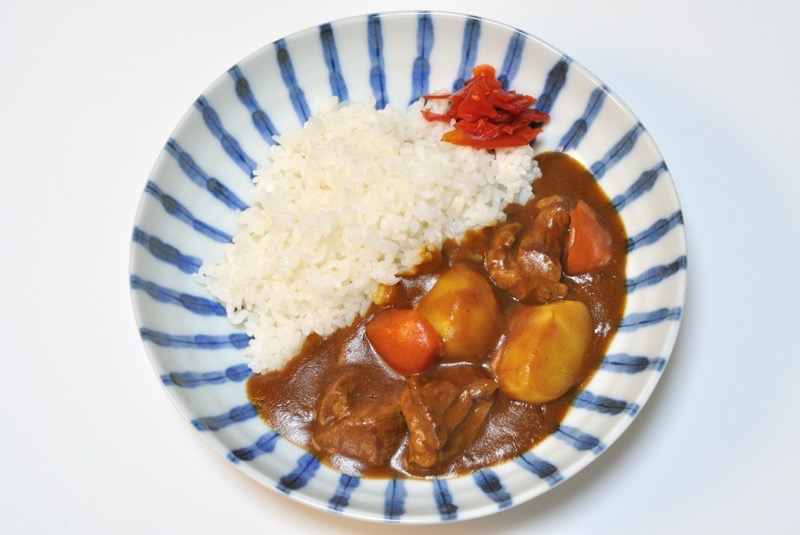Yasaka Shrine of Kyoto marks the boundary of the bustling Gion district of Kyoto. While visiting and tired from walking around the shrine on a particularly cold day in late January, I craved something spicy, flavourful, and something I could call soul food. Being an Indian, I often face such cravings, but how could I satiate that, as the Japanese food I knew was rarely spiced?
If a foreigner wants something spicy in Japan, they’ll probably have to consider foreign cuisine as an option. However, what a foreigner might miss out on is karē raisu (curry rice), a Japanese staple that is everything from soul food to a haven for the tastebuds of travellers like me.
Tucked in the quieter areas, a little walk from the shrine, is Coco Ichibanya, one of the biggest Japanese curry chains in the country. The curry house has branched over the world with 187 international locations, one even being in India in the state of Haryana. At Coco’s curry house, I first tasted Japanese curry and instantly became a fan.
But really, who would have thought of curry when one thinks of Japanese food? Originally a Western influence, the curry was considered exotic; however, over a long period, the curry adapted to the palette of the Japanese public and became a national staple. According to a report by the Japan Times, curry could be traced back to 1853, when Commodore Matthew Perry landed on the coast of Kurihama, ending the Japanese isolation period, Sakoku.
He is attributed to opening the gates of Western influence to Japan. Anglo-Indians of the royal navy, alongside other British squadrons who accompanied Perry, are believed to have brought the curry powder and curry dishes.
Many debate that the gift of curry to Japan comes from Britain and not India, indicating that curry powder is a creation of Britain and not a common spice in India. While that may be true, curry powder is a blend of various Indian spices, just like India’s own garam masala, but it became a thing for Britain only after turmeric was introduced by India. In tasting the modern Japanese curry, one could taste the British influence without faltering, as the sweetness and the viscosity of curry resemble it; however, the blend of Indian flavours could not be missed.
Raisu karē was first documented in 1872. The recipe appeared in a cookbook, similar to the recipes of Mrs. Beeton, whose recipes were standard classics for middle-class households. Cooked with meat and broth thickened with flour (instead of now common roux), it was sweetened with apple, not something common in India. British recipes, as well as Anglo-Indian curries of Madras, Bengal, and Bombay, used apples as a replacement for mangoes. The Japanese recipe also used juice from yuzu, a citrus fruit, which was assumed to replace lemon.
At the chain restaurant, I could taste the sweetness in the curry, which the server informed me came from honey. One could order curry without honey, and my vegan colleague opted for it. The shop even uses different fruits for sweetness.
For a long time, the exported curry powder was considered superior in quality and much more expensive, making the dish exotic. It was considered yōshoku, a western dish. As early as 1877, the displays of Tokyo diners began to present the expensive taste.
As Lizzie Collingham, the author of Curry: A Tale of Cooks and Conquerors, says, curry truly found its place not on the tables of restaurants but in the army halls. Being an easy meal to cook for a large group, curries became a simpler way to incorporate beef into soldiers’ diets in the hope of providing them strength. For the same reason, curries also became popular in school cafeterias after World War II.
Then, in 1931, a scandal around the production of curry powder changed how curry was consumed in Japan. Dealers of curry powder were caught selling cheap domestic spices labelled as expensive British imports. The public soon realised that the domestic products were not distinguishable and, hence, began to inculcate them into their daily diets.
The introduction of curry mixes and ready-to-make packages made curry a home-kitchen hit. They were introduced as “retort curry” in 1969; ready-to-cook curry comes in vacuum-sealed packages which only require hot water. Home cooks and students depended on it for its ease and convenience. As per a survey, more than half of the population living in Japan eat curry using these pouches. The Japanese astronaut Mamoru Mohri even introduced the ready-to-eat packages to NASA in 1997 as they don’t need refrigeration and can be used as an emergency ration.
After the Tōhoku earthquake and tsunami of 2011, ready-to-eat curries that don’t even require to be heated up were also introduced by popular retort manufacturers like Ezaki Glico and House Foods.
Curry has widely become an army staple, served every Friday to Japan Maritime Self-Defense Forces since Imperial Navy days. Each ship of Maritime Self-Defence Forces has a unique recipe, some of which are featured on their website.
What came as a Western influence became a national favourite of the people of Japan. The thick, sticky, and sweet curry of Japan may resemble the curries of Britain but has been heavily modified to take an identity of its own, and yet, the warming, strong flavours are very specific to its Indian origin, homely for a traveller like me.
Different regions of Japan now serve their own version of curry. What was originally served with rice is now also served with different types of noodles (Udon, Soba, Ramen) and even cutlets (Katsu) made of pork and chicken, which, in my opinion, brings a spicier twist than the traditional broth.
As the Japanese food writer Morieda Takashi says, Japanese feast more on curry than sushi and tempura. A survey of 10,000 people claimed curry rice as the “national dish of Japan” – a claim justified by saying most people eat karē raisu several times a week.
Curry was omnipresent in Japan. One can find it anywhere, be it local train stations, small corner cafes, traditional diners, and college cafeterias. I did not realise that karē raisu, karē udon, karē ramen, and many other karē variations were dishes that could have connected my homeland to a foreign land.
-30-
Copyright©Madras Courier, All Rights Reserved. You may share using our article tools. Please don't cut articles from madrascourier.com and redistribute by email, post to the web, mobile phone or social media.Please send in your feed back and comments to [email protected]











